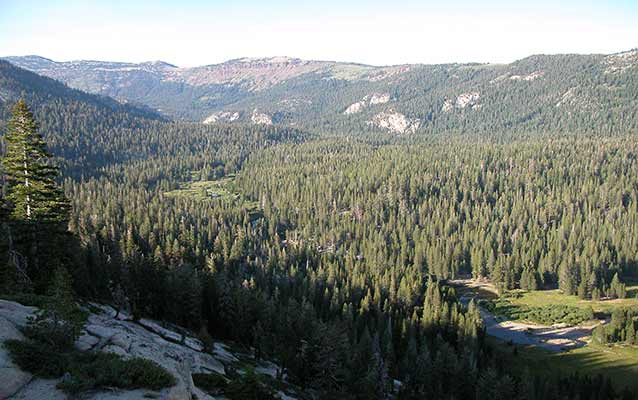Last updated: March 8, 2019
Lesson Plan
Climate Science in Focus (Evaluations)

- Grade Level:
- High School: Ninth Grade through Twelfth Grade
- Subject:
- Math,Science
- Lesson Duration:
- 60 Minutes
- State Standards:
- NATIONAL/STATE STANDARDS:
HS-ESS3-5
HS-LS2-7
HS-LS4-6 - Thinking Skills:
- Evaluating: Make informed judgements about the value of ideas or materials. Use standards and criteria to support opinions and views.
Essential Question
What is climate science?
Objective
Students will be able to:
1. Demonstrate learning through performance on post-assessment.
2. Complete Unit Evaluation.
Background
In “Climate Science in Focus (Evaluations),” students will demonstrate what they’ve learned from the unit by completing a post test evaluation. Broken into eight days, these lessons require 58 minutes to complete. Designed around 9th grade Next Generation Science Standards, it is a unit easily adapted down for middle school or up for advanced high school classes. Teach the entire unit or pull out particular activities. This is lesson 8 of the unit.
The Earth consists of four systems: the atmosphere, hydrosphere, geosphere, and biosphere, which are interconnected. Changes to one part of the system can have consequences on the others. Changes to global or regional climate can be caused by changes in the sun's energy output or Earth's orbit, tectonic events, ocean circulation, volcanic activity, glaciers, vegetation, and human activity.
Water is essential for life on Earth. Relative water availability is a major factor in designating habitats for different living organisms. In the United States, things like agriculture and water rights are hot topics. Current models predict that average global temperatures are going to continue to rise even if regional climate changes remain complex and varied. These changes will have an impact on all of Earth's systems.
Studies have shown that climate change is driven not only by natural effects but also by human activities. Knowledge of the factors that affect climate, coupled with responsible management of natural resources, are required for sustaining these Earth systems. Long-term change can be anticipated using science-based predictive models, making science and engineering essential to understanding global climate change and its possible impacts.
National Parks can serve as benchmarks for climate science trends and effects over time because they are protected areas void of human influence. Understanding current climate trends will help set students up to be successful in interpreting and engaging in discussions about climate change, which will lead to informed decision making.
Day 1- Earth as a System
Day 2- Weather vs Climate
Day 3- Watershed
Day 4- Climate Science Data and Tools
Day 5- Field Trip
Day 6- NPS Connections
Day 7- Project Preparation
Day 8- Evaluations
Preparation
Most of the materials for this unit are provided in the Stream Flow River Study Trunk or as downloadable files.
Materials
Lesson Plan
Procedure
1. Distribute assessments to students.
2. Collect assessments and distribute student evaluations.
